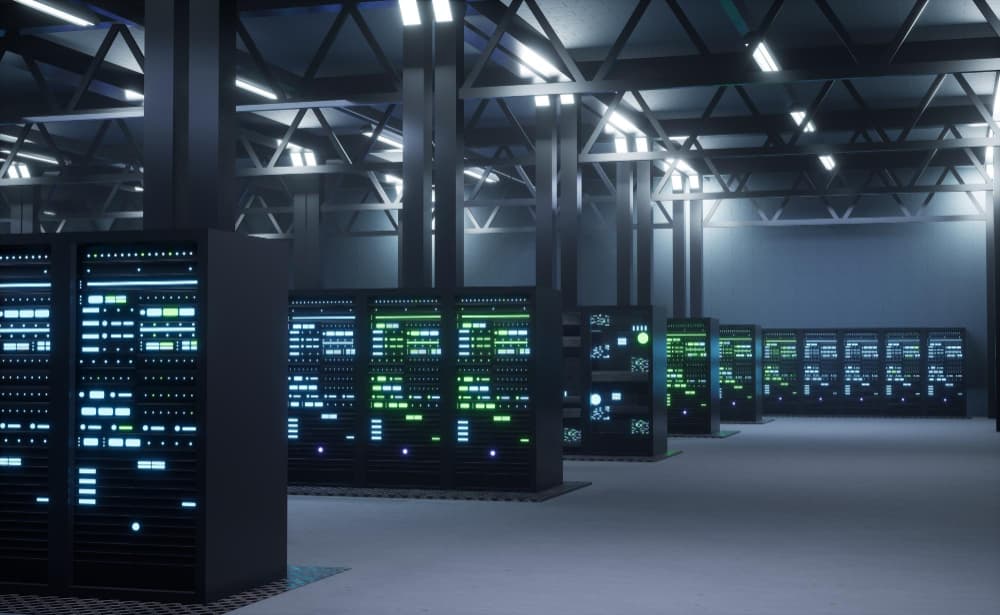What is IT Infrastructure Management and Why Does It Matter?

IT infrastructure management is the practice of overseeing, optimizing, and maintaining the foundational technology systems that power a business. This includes everything from physical hardware and software to networks and data storage systems.
Far from being a background operation, your IT infrastructure is the nervous system of your organization because it dictates how well your business can scale, adapt, and compete.
Managing an IT infrastructure is like coordinating a symphony of technological components, each playing a vital role within your operations. Just like a well-oiled machine, it needs consistent and proactive care to prevent issues before they arise, allowing you to foster digital resilience and growth.
Core Components of a Modern IT Infrastructure
Understanding what comprises a modern IT infrastructure is key to managing it effectively. Key components of a modern IT infrastructure include:
- Hardware
- Software
- Network
- Cloud and Virtualized Infrastructure
- Security and Compliance
Hardware

This includes all the physical equipment, servers, switches, routers, storage devices, responsible for processing and storing data. Without robust hardware, digital operations crumble.
Software

Operating systems, productivity tools, CRMs, CMSs, ERP systems, and middleware make up the software stack. These tools are the digital gears that allow your business to operate, adapt, and compete.
Network

Your network is the thread that ties it all together. Firewalls, VPNs, access points, and connectivity tools form the backbone of communication and data flow, ensuring availability, scalability, and security.
Cloud and Virtualized Infrastructure

Hybrid and cloud-based infrastructures are now standard. Virtualization platforms allow businesses to maximize resource use and scalability while reducing physical infrastructure costs.
Security and Compliance

Modern infrastructures include integrated cybersecurity tools like endpoint protection, SIEM systems, intrusion detection, and encryption to safeguard operations and stay compliant.
The management systems running all this is vital. A failure in one can lead to disruptions across the board. The right tech stack management is vital for success.
The Benefits of IT Infrastructure Management
Managing your IT infrastructure effectively leads to benefits across the organization:
Operational Continuity

Having a well-oiled IT infrastructure ensures your business processes keep running smoothly while avoiding costly downtime and regulatory fines.
Cost Efficiency

Preventative maintenance and optimized resource use lead to reduced operational costs. Downtime is costly, Gartner estimates it at $5,600 per minute; that’s $300,000 an hour! Effective IT infrastructure management helps avoid these expenses while boosting operational efficiency.
Scalability

A well-structured infrastructure can evolve with your company as you grow. When done correctly, IT infra management allows you to effectively design and maintain a modular IT environment, making it easier to add or remove IT components without compromising your operations.
Enhanced Security
IT infrastructure management is vital to ensure your entire infrastructure remains protected. The proactive monitoring and structured oversight provided by effective IT management minimizes vulnerabilities and exposure by increasing visibility, responsiveness, and control across all your systems.
Data Accuracy and Accessibility

Effective IT infrastructure management increases data accuracy and accessibility by ensuring that data is consistently collected, validated, stored, and synchronized across systems in real-time.
With tools like centralized data management, automated backups, and integrated platforms, your organization can eliminate data silos, reduce human error, and maintain a single source of truth, allowing employees to:
- Access up-to-date, accurate information anytime from any authorized device
- Faster decision-making
- Improved customer service and productivity
- Stronger compliance with data governance standards
Strategic Agility
IT infrastructure management improves strategic agility by giving organizations the technological flexibility and responsiveness needed to quickly adapt to market changes, customer demands, and emerging opportunities.
By maintaining scalable, modular systems and centralized oversight, businesses can rapidly deploy new applications, integrate emerging technologies (like AI or IoT), and pivot operational models without overhauling core infrastructure.
When done effectively, IT infrastructure management will position your organization to be resilient, adaptable, and forward-thinking.
The 4 Principles for Effective Infrastructure Management
These core principles serve as the north star for any infrastructure strategy:
Proactivity Over Reactivity
Being proactive allows you to fix issues before they occur, making managing your IT infrastructure cheaper, faster, and less disruptive.
In addition, proactivity allows you to allocate IT resources more efficiently, plan for growth, and algin your IT infrastructure with your existing IT goals.
Alignment With Business Goals
IT should support business strategy, not just keep systems running. By aligning your existing tech stack with strategic objectives IT teams can prioritize resources, investments, and configurations to directly contribute to positive business outcomes.
On the other hand, not aligning your infrastructure with your current business goals can:
- Hinder performance, scalability, and security
- Promote wasteful spending on hardware, software, maintenance, and upkeep.
- Inhibit alignment with regulatory compliance frameworks and more.
Standardization
Uniform processes and configurations reduce complexity and improve scalability. When your IT environment is consistent, predictable, and easily controllable, the entirety of your IT operations becomes simpler, and less prone to errors.
Visibility
Knowing your existing assets, how they perform, and how they’re interconnected, provides real-time insight into your system’s performance, health, and overall security measures.
With complete visibility, IT teams can monitor resource usage, detect anomalies, identify bottlenecks, and trace root cause of issues quickly reducing downtime and preventing small problems from escalating
Resilience
An IT infrastructure is designed with redundancy when IT has failover mechanisms, robust backup strategies, and disaster recovery plans in place. These plans are there to minimize the impact of hardware failures, cyberattacks, or natural disasters.
By proactively managing vulnerabilities and stress-testing systems, organizations reduce downtime, protect data integrity, and maintain service availability even under pressure.
Following these principles ensures your infrastructure is not just functional, but exceptional.
Strategies to Enhance IT Infrastructure Management
To successfully manage your infrastructure, consider these high-impact strategies:
Automate Repetitive Tasks
Routine IT tasks like patching systems, backing up data, or provisioning servers can eat up valuable time and leave room for human error. By automating these processes with AI or other automation tools, your team can ensure consistency, boost efficiency, and focus on higher-impact initiatives.
Automation not only speeds things up, it also greatly reduces operational risk while ensuring no task slips through the cracks!
Centralize Management
Juggling multiple dashboards and systems creates unnecessary complexity. Integrating your IT management systems into a centralized platform brings everything networks, servers, devices, cloud services into one unified view.
This approach allows you to easily monitor performance, respond to issues faster, and make better decisions, backed up by real-time data at your fingertips.
Use a CMDB (Configuration Management Database)
A CMDB acts like the brain of your IT environment. It provides a detailed map of all your assets, what they are, where they are, and how they connect. This is essential when you’re making changes, diagnosing problems, or assessing the impact of an outage.
With a CMDB, you can manage risk, streamline operations, and ensure smarter, faster decision-making.
Integrate ITAM (IT Asset Management)
Imagine an employee leaves your company. With ITAM in place, you can instantly see which laptop, phone, and software licenses were assigned to them making it easy to reassign or decommission those assets safely and quickly.
IT Asset Management gives you control, visibility, and accountability over your technology investment allowing you to maximize value, reduce risk, and align your IT resources with business goals.
Establish SLAs (Service Level Agreements)
Establishing clear Service Level Agreements (SLAs) allows you to create a structured, measurable framework for performance, accountability, and service quality. SLAs define the expected level of service such as:
- System uptime
- Response times
- Issue resolution targets
All of this while ensuring that both IT teams and stakeholders are aligned on goals and responsibilities.
SLAs create accountability and drive service excellence. When integrated into IT infrastructure management, they promote transparency, drive performance, and ensure that infrastructure supports the business’s needs daily.
Best Practices to Optimize Your IT Infrastructure
Optimization isn’t about overhauling everything; it’s about continuous improvement. By following these best practices, your organization will have an IT infrastructure that performs at the highest standards.
Regular Audits
Conducting IT audits regularly is key to identifying bottlenecks, underutilized resources, and outdated systems. Adopting audits on a routine basis will help you:
- Catch issues early before they cause major disruptions
- Optimize resource allocation and as a result reduce costs
- Improve decision-making
- Boost your overall network performance.
Capacity Planning
Capacity planning allows you to avoid surprises by forecasting future resource needs based on trends, enabling you to stay on top of your business needs despite your workflow fluctuations.
Redundancy and Failover
Redundancy and failover mechanisms build resilience into your infrastructure by eliminating single points of failure. This means that if one server, switch, or system fails, another can automatically take over keeping services online and minimizing downtime.
Update Firmware and Software
Keeping firmware and software up to date is a non-negotiable for optimization. Outdated systems are more vulnerable to security threats, more likely to crash, and often incompatible with newer technologies.
Updates patch security holes, improve performance, and introduce new features all of which contribute to a more secure, stable, and efficient infrastructure.
Segmenting Your Network
Network segmentation divides your infrastructure into smaller, controlled zones. This improves performance by reducing congestion and enhances security by isolating sensitive data and limiting threat movement.
It’s especially critical for meeting compliance requirements and minimizing the impact of potential breaches.
Adopt Infrastructure as Code (IaC)
Infrastructure as Code (IaC) brings automation, consistency, and scalability to IT infrastructure management. By defining infrastructure through code, teams can deploy environments faster, reduce human error, and ensure repeatability across development, testing, and production.
This makes IAC essential, especially for cloud-native operations.
Monitoring: The Backbone of a Resilient System
Effective monitoring enables you to immediately solve IT problems while also contributing to strategic planning. Monitoring delivers visibility, speeds response time, and guides strategic planning.
Tools like SolarWinds can help teams monitor networks, servers, applications, and services offering real-time alerts and deep insights.
Proactive Maintenance and Ongoing Updates
Updating your IT infrastructure is critical to prevent issues from happening before they arise. With technology rapidly evolving, continuous updating becomes vital to keep your infrastructure safe and secure.
Routine maintenance includes:
- Security patches
- Hardware diagnostics
- Data backups
- Firmware upgrades
Think of it as regular check-ups to ensure peak performance. Skipping them invites disaster.
The Critical Role of IT Asset Management and CMDB
ITAM is the discipline of tracking every IT asset from purchase to retirement. This ensures proper usage, budget alignment, and reduced redundancies.
Meanwhile, the CMDB acts as a map of your IT ecosystem. It shows how systems are connected, helping you understand the impact of changes or failures. It’s not just about knowing what you own—it’s about understanding how it all works together.
Together, these tools create a controlled, visible, and reliable environment.
Strategic Planning Aligned with Business Objectives
Strategic planning involves aligning your IT goals with broader business objectives. This includes:
- Budget forecasting
- Technology refresh cycles
- Capacity planning
- Compliance roadmap
- Digital transformation alignment
Done correctly, strategic planning helps you stay ahead of the tech curve and ensure your infrastructure evolves in tandem with your business.
Empowering Your Team Through Ongoing Training
Training your employees constitutes another essential practice. Educating them about the best IT practices and troubleshooting common issues, as well as keeping them up to date with the latest cybersecurity threats, can significantly reduce downtime and improve overall productivity.
According to Verizon, 82% of data breaches have been linked to human-related security weaknesses.
Disaster Recovery and Business Continuity Planning
Disaster Recovery and Business Continuity Planning (DR/BCP) are critical components of resilience.
A solid plan includes:
- Data backups and replication
- Failover systems
- Communication plans
- Testing and simulation
A disaster recovery plan outlines the steps needed to minimize downtime and restore operations quickly. Even brief disruptions today can create lasting business consequences.
From Support to Innovation Driver
With over 40 years of proven experience, BTI turns IT infrastructure management from a burden into a competitive advantage.
IT infrastructure management enables agility, data-driven decision-making, and scalability. By managing your infrastructure with intention, you’re not just avoiding outages, you’re building a competitive edge.
Ready to reduce costs, boost security, and unlock peak IT performance? Let BTI show you how. Contact us today to schedule your free IT infrastructure assessment and discover how our IT services will optimize your operations from the ground up.
Stabilize, Secure & Scale Your IT Infrastructure with BTI
Get a no-cost assessment and a practical roadmap for uptime, resilience, and performance.
Frequently Asked Questions
What is the difference between IT infrastructure and IT infrastructure management?
IT infrastructure refers to the physical and digital components like servers, networks, and software. Infrastructure management focuses on optimizing, securing, and maintaining these components.
How often should IT infrastructure be updated?
Regularly. Patches should be applied monthly, while major reviews and upgrades should occur annually or biannually.
What tools are recommended for infrastructure monitoring?
Popular tools include Nagios, Zabbix, Datadog, and SolarWinds, depending on your environment and budget.
Why is a CMDB important?
It gives a complete view of your IT assets and their relationships, enabling better decision-making, impact analysis, and troubleshooting.
What's the biggest risk of IT infrastructure management?
Downtime, data loss, security breaches, and higher costs. Poor management can cripple an organization’s operations and reputation.

Eric W. Brackett is the founder and president of BTI Communications Group, where he’s been helping businesses nationwide simplify communications, strengthen IT security, and unlock growth since 1985. Known for his client-first approach and “Yes! We Can” mindset, Eric transforms complex technology into reliable, cost-saving solutions that deliver long-term value.







